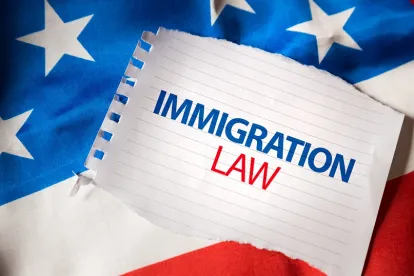President Joe Biden’s American Citizenship Act of 2021, introduced in Congress in February, would provide large-scale immigration reform. But it will be difficult to pass such a comprehensive bill.
The last time comprehensive immigration reform made it through Congress was in 1986, during the Reagan Administration (although another, smaller bill passed in 1990, during the Bush Administration). Given that outlook, the administration has developed a “multiple trains” strategy – prioritizing certain pieces to move through Congress.
Legislation to protect “Dreamers” could be a successful carve-out. Of course, the idea of passing a separate measure to protect Dreamers is not new. Congress has tried to pass legislation for permanent relief for these individuals close to a dozen times since 2001. While these bills have generally garnered bi-partisan support, they have never passed. That is why President Barack Obama instituted the Deferred Action for Childhood Arrivals (DACA) Program as a stop-gap measure in 2012. DACA has managed to survive despite the Trump Administration’s efforts to end the program. But DACA still leaves Dreamers in limbo without a long-term solution.
There are two bills to help the Dreamers in Congress: the Dream Act of 2021 (the Senate bill) and a version of that act which is part of the American Dream and Promise Act of 2021 (the House bill). Within 15 days of being introduced, the House bill was passed in the House with a 228-197 vote. The House bill has more lenient terms for Dreamers, but both bills would provide a path to citizenship for Dreamers, with several differences in terms of eligibility.
-
The Senate bill sets the age of arrival at 17 years old or younger. In the House bill, the age limit is a bit more lenient – 18 or younger.
-
The Senate bill requires continuous presence for four years prior to the bill’s enactment. The House bill instead requires physical presence since January 1, 2021.
-
Both bills have a period of conditional permanent residence (CPR), which would include work authorization: eight years for the Senate bill and 10 years for the House version. CPR leads to Legal Permanent Residence and ultimately naturalization.
-
Both bills have disqualifying criminal convictions and exclude crimes related to lack of immigration status. But there are some differences. For instance, the House bill excludes minor traffic offenses, certain marijuana-related crimes, nonviolent civil disobedience, and domestic violence if related to victimization.
Additionally, the House bill has a secondary review process giving DHS the discretion to deny applications from individuals deemed to be threats to public safety. The House bill also would repeal the 1966 law penalizing states granting in-state tuition to Dreamers, allow Dreamers to access federal financial aid, and allow Dreamers deported under the Trump Administration to apply for relief from outside the U.S.
It has been estimated that the Senate bill would help 2 million Dreamers, while the House bill would help 3 million.




 />i
/>i

